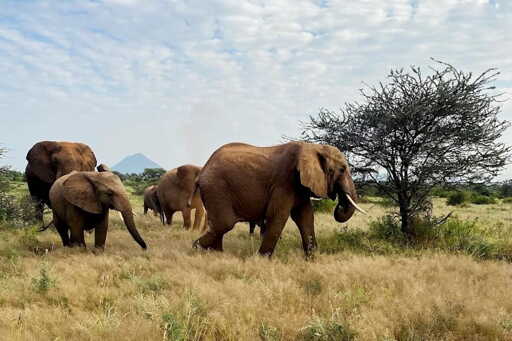The regularly used airstrip outside the town of Archers Post, in northern Kenya, was closed after being damaged in heavy rains, so my flight landed at an even tinier dirt airstrip on the other side of Samburu National Reserve. From there, the road headed south across community-owned grazing lands to the western gate of the reserve, along the Ewaso Ng’iro River. It was just a week into 2024, and January is normally the start of the dry season, but the rains still hadn’t fully subsided. The reserve, a protected area about the size of Washington, DC—part of a much larger swath of adjacent conservation lands—was a study in green, its plains and hillsides covered in a tangled tumult of vegetation. Almost as soon as we crossed the reserve boundary, we were among elephants, ranging in size from months-old babies to small and spunky adolescents to towering matriarchs and giant bulls. They lumbered about on their baggy-skinned legs and round feet, they snoozed, they roughhoused, they nursed, they waded in the river, they doused themselves with dirt. In the midday heat, they stood in the shade of acacia trees and lazily plucked up wads of greenery with their trunks, then swung it up into their mouths. They were unbothered by the presence of the Land Cruiser I rode in; they wandered right up to the vehicle, some barely more than a trunk’s length away. These were salad days for the Samburu elephants. It had been a long, hard, deadly two years…This article was originally published on Mongabay
From Conservation news via this RSS feed


